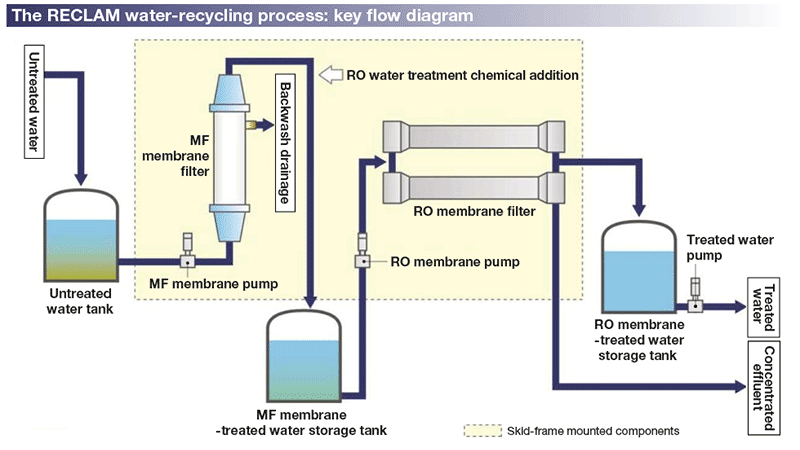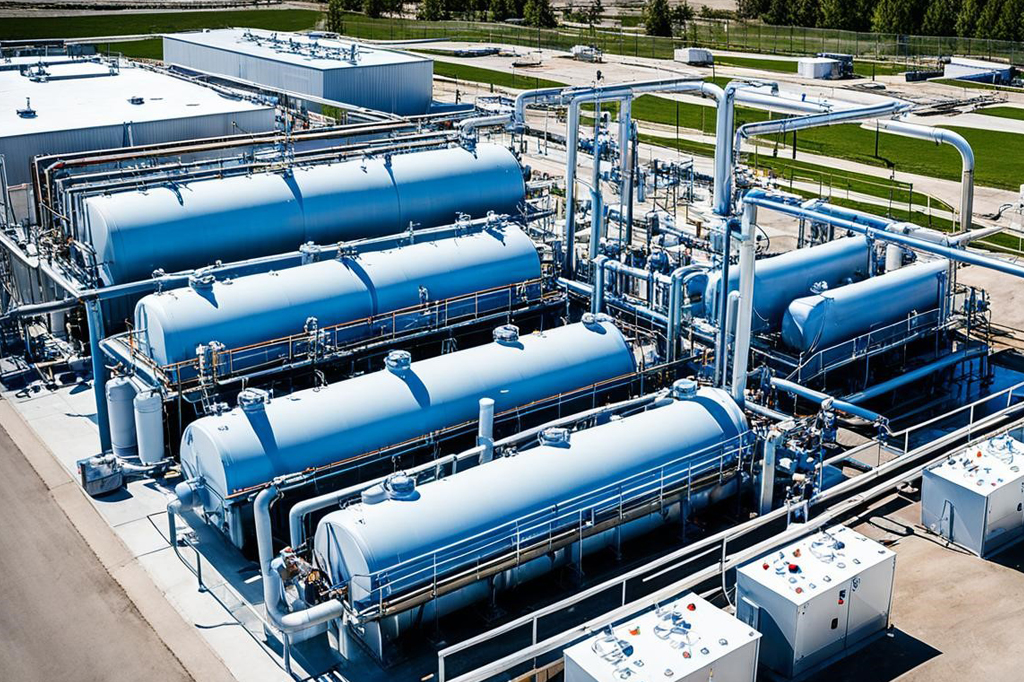Developments and Advances in Industrial Waste Water Therapy Technologies
The landscape of commercial wastewater treatment is undergoing a transformative shift, driven by developments that improve both effectiveness and sustainability. As regulative criteria advance, the assimilation of AI and machine learning into wastewater management systems promises to guarantee and improve operations conformity.
Introduction of Drainage Therapy Technologies
Wastewater therapy modern technologies include a variety of techniques made to get rid of pollutants from industrial effluents before their launch right into the atmosphere. These innovations are vital for preserving ecological balance and ensuring conformity with ecological guidelines. The main categories of wastewater therapy include physical, chemical, and biological methods, each serving unique purposes based upon the nature of the pollutants present.

Biological treatment techniques use microorganisms to deteriorate natural issue, making them specifically effective for organic-rich effluents. Methods like triggered sludge and biofilm activators harness the all-natural destruction capabilities of germs, resulting in considerable decreases in biochemical oxygen need (FIGURE)
Advanced Purification Strategies
Advanced filtration techniques represent a vital advancement in the world of commercial wastewater therapy, boosting the performance of impurity elimination procedures. Industrial Waste Water Treatment. These approaches incorporate an array of modern technologies, consisting of microfiltration, ultrafiltration, nanofiltration, and turn around osmosis, which supply consecutive barriers for different bit sizes and chemical structures
Microfiltration and ultrafiltration utilize membrane layer systems to get rid of put on hold solids, microorganisms, and bigger organic molecules, improving the quality of effluent prior to more therapy. Nanofiltration connects the space between ultrafiltration and reverse osmosis, effectively getting rid of divalent ions and natural substances, hence lowering the lots on downstream procedures.
Reverse osmosis provides the highest degree of filtration by enabling only water and tiny particles to pass with its semi-permeable membrane layers, making it ideal for redeeming high-grade water from commercial effluents. Recent advancements in membrane layer innovation, including the growth of more durable and fouling-resistant products, have dramatically boosted operational efficiency and lowered expenses.
Incorporating these innovative filtration strategies not only boosts the general treatment procedure but additionally contributes to sustainability initiatives by allowing water reuse and resource healing in industrial setups. (Industrial Waste Water Treatment)
Biological Treatment Innovations

Additionally, the advancement of crafted biological systems, such as membrane layer bioreactors (MBRs), combines organic treatment with advanced membrane filtration. This integration enables higher effluent quality and minimized footprint, making it ideal for space-constrained commercial centers. Innovations in genetically engineered microorganisms have actually likewise arised, improving the biodegradation of details impurities, such as pharmaceuticals and heavy steels, that are generally challenging to get rid of.
Additionally, the application of bioaugmentation techniques, where useful microbes are presented to improve the existing organic therapy processes, has shown appealing lead to enhancing therapy efficiency. These innovations jointly represent a trend towards more reliable and sustainable organic treatment techniques that have a peek at this site can adjust to the developing complexities of industrial wastewater streams. As sectors remain to focus on ecological compliance, these organic technologies will certainly play an essential role in wastewater administration.

Resource Recuperation Techniques
In industrial setups, the combination of source recuperation methods has come to be increasingly vital for enhancing sustainability and minimizing waste. These techniques concentrate on removing important materials and power from wastewater streams, consequently changing possible contaminants into multiple-use sources.
One noticeable approach is vitamins and mineral healing, where nitrogen and phosphorus, typically present over in wastewater, are caught and converted right into fertilizers. This not only lowers ecological impacts however additionally supplies a circular economy remedy for agricultural applications. Additionally, innovations such as anaerobic digestion enable the conversion of natural waste right into biogas, a renewable resource source that can counter nonrenewable fuel source usage in commercial procedures.
Furthermore, progressed filtration and membrane modern technologies assist in the recuperation of industrial byproducts such as metals and salts. These recuperated products can be rehabilitated into manufacturing processes, reducing the requirement for virgin sources.
Future Fads in Drainage Management
As industries significantly prioritize sustainability, the future of wastewater management is set to go through significant makeovers. Technical advancements, such as fabricated intelligence and artificial intelligence, will certainly allow extra effective tracking and administration of wastewater systems. These this technologies can predict maintenance requirements, optimize treatment processes, and boost decision-making, ultimately reducing functional expenses and ecological influence.
Additionally, the assimilation of round economic situation principles will certainly play a vital duty in wastewater management. Industries are anticipated to change towards systems that not only treat wastewater however likewise recuperate important sources, such as nutrients, water, and power. This transition will certainly minimize waste and advertise the reuse of products, straightening with global sustainability objectives.
Arising therapy strategies, such as membrane bioreactors and advanced oxidation procedures, will better boost the efficiency of wastewater therapy, enabling better effluents appropriate for reuse. Additionally, this hyperlink governing structures are likely to evolve, highlighting stricter requirements for wastewater discharge and motivating markets to embrace innovative therapy remedies.
Conclusion
In conclusion, the advancement of commercial wastewater treatment technologies shows a considerable shift towards enhanced performance and sustainability (Industrial Waste Water Treatment). Developments in advanced filtration methods, organic treatments, and source healing approaches highlight the industry's commitment to ecological stewardship.
The landscape of industrial wastewater therapy is undergoing a transformative shift, driven by advancements that boost both efficiency and sustainability.Wastewater therapy technologies include an array of methods created to eliminate impurities from commercial effluents prior to their release into the environment.Taking advantage of the power of organic processes has led to substantial innovations in the therapy of industrial wastewater.Furthermore, the implementation of bioaugmentation methods, where valuable microbes are presented to enhance the existing organic treatment procedures, has actually revealed promising outcomes in boosting therapy performance. These innovations jointly indicate a fad in the direction of more effective and lasting biological treatment methodologies that can adapt to the advancing intricacies of industrial wastewater streams.